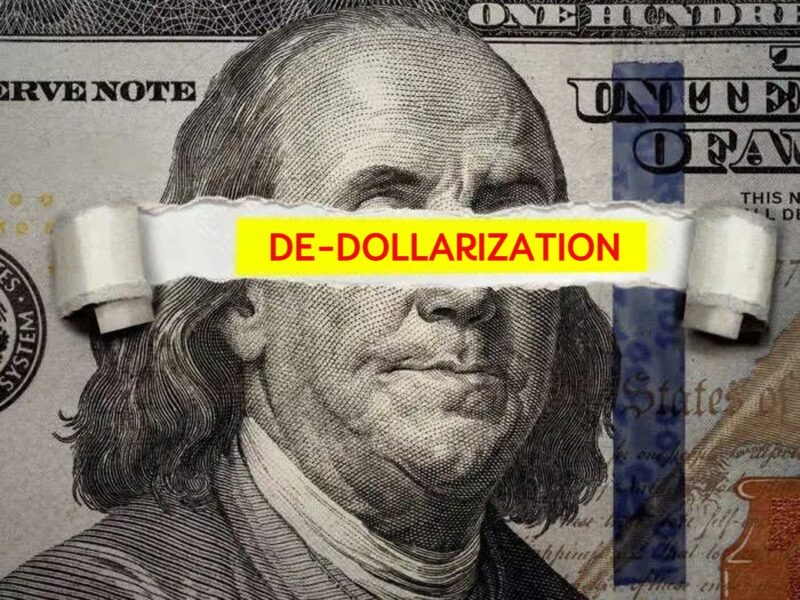While de-dollarization stems from two or more countries agreeing to abandon the US dollar for trade by using local currencies, a new trend is emerging in the financial world where individual countries are calling the shots. The new trend is ‘silent de-dollarization’.
Also Read: Belarus Expands Local Currency Usage In A Major De-Dollarization Shift
What Is Silent De-Dollarization? Explained!


The phrase silent de-dollarization is going hand-in-glove to take on the unruly policies of the White House. It is a gradual and less publicized event where governments and central banks make a shift away from the US dollar.
To keep it in context, silent de-dollarization is when central banks diversify their reserves with gold and other assets and limit the influence of the US dollar-denominated assets like Treasuries and bonds. Countries like China, India, Brazil, Russia, and South Africa have been accumulating gold at a rapid pace for the last three years. The US dollar is giving way to other assets in its central bank reserves.
Another example of silent de-dollarization is bond issuance in other local currencies. Several countries are issuing bonds in their local currencies and eating up the US dollar’s share. The Chinese yuan, euro, and pound, among other currencies, have already started issuing government bonds. All of these don’t involve two parties, but a move from the US dollar to benefit their respective economies.
Also Read: Morgan Stanley US Dollar Decline Forecast, 2025 Slowdown Expected
In addition, another set of silent de-dollarization is coming via currency swap lines. Central banks are allowing payments to tourists via QR codes, where it automatically swaps to local currencies while making a payment, be it at a cafe, pizza store, or other merchant in the country. Payment interfaces like UPI, among others, are leading the silent de-dollarization phenomenon.
The list includes China, India, Thailand, Singapore, and Vietnam, which have successfully launched QR code payments for tourists. The payments were usually made in the US dollar previously by foreigners who visited the country. Tourists no longer have to carry cash in USD wherever they travel, making them a part of the de-dollarization initiative.





